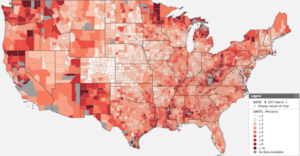
Beginning in September 2010 until March 2020 the United States added more than 22 million jobs to the economy. Then came the historic COVID-19 pandemic that wiped almost that entire 10-year gain in a mere 6 weeks. In only a little more than one month the unemployment rate skyrocketed from about 3.5% in February to a high of 14.7% in April. The trend for May has reversed that free-fall, with unemployment dropping to 13.3%, less than many were expecting.
The re-opening of the economy, including a return to work of employees to the leisure and hospitality, construction, education, health services, and retail sectors, has lifted the total number of employed during the month of May.
The good news about employment caused a rise in the stock market, with the NASDAQ almost reaching a record high. The S&P went up more than 2% and is now only 1% shy of where it was at the beginning of 2020, and less than 6 percentage points short of where it was in February, before corona burst onto the planet, to devastating effect.
The NASDAQ, which weighs towards hi-tech companies such as Amazon, Apple, and Microsoft, is protected to a certain degree from economic downturns down-turns. The sheer size of these companies is protective, but in addition, lockdowns necessitated by the coronavirus did not affect tech companies as much since workers can more easily pivot to working from home than traditional companies that require a human workforce to interface with consumers. Even more, the dependence consumers had on e-commerce during the lockdown boosted the strength of these types of companies.
During May employers added 2.5 million jobs to the job market, despite the prediction by economists that the government was going to report the loss of 8 million jobs during the month.
